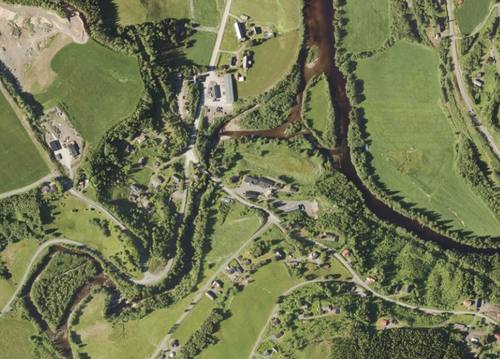Restoration of the riparian zone vegetation
Contents
Introduction
The riparian zone or riparian area is the interface between land and a river or stream. The vegetation along the riparian zone provides multiple functions to the river and its ecosystem. The vegetation will provide allochthonous, organic material to the river, shelter and shading to the areas near the shore, and stabilize the soil by the river, thus reduce the runoff of erodible particles, nutrients and potentially other pollutants from the land areas. Vegetation along the river can lead to higher biodiversity in the river, as well as along the shore. This measure simply refers to reinstate the vegetations along the river in order to provide the benefits of vegetation to the river and its ecosystem, hence reducing the impacts of lack of vegetation along the river.
Methods, tools, and devices
During planning
The easiest way to assess the potential for introducing this measure is simply by having a site visit and see if there are any parts of the riparian areas where vegetation has been removed and where trees, bushes and other vegetation can be reinstated. Re-planting of vegetation should be made from local plants.
It should be assessed if the reinstating of vegetation will affect the peaks of the floods in the rivers, as vegetation can lead to lower capacities to convey floods. Vegetation might increase the roughness of the river channel, preventing the water from flowing into the areas beside the river in situations with high flows. Such assessments can be made with use of hydraulic tools, such as HEC-RAS (see Chapter 9.1 for references).
During implementation
No specific device should be needed to re-plant vegetation along the river. As soon as local plants are re-instated, they would naturally reproduce. It should be avoided to plant mono-cultures, but rather a mix of local plants. As new planted trees and bushes are less resistible to floods, the timing the vegetation is re-established should consider the risk of being flushed out, if planted in a flood-prone area. If grazing animals are nearby, the area of the new vegetation should be protected.
During operation
The growth of the new vegetation can be controlled simply by a site visit, or by analysing satellite or aerial photos. No maintenance should be needed if a natural flood regime controls the expansion of the vegetation. If the vegetation grows into the river channel and this might be a risk to the flood capacity of the river, the vegetation at these locations should be cut regularity, e.g. every 2-3 years.
Classification Table
|
Classification
|
Selection (multiple) |
|
|
Fish species measure designed for |
All |
|
|
Does the measure require loss of power production? |
Structural (requires no additional flow release) |
|
|
Recurrence of maintenance |
Less often than yearly |
|
|
Which life-stage of fish is measure aimed at? |
All |
|
|
Which physical parameter mitigated?
|
Substrate Water temperature Ice |
|
|
Hydropower type the measure is suitable for |
Plant in dam Plant with bypass section |
|
|
Dam height [m] the measure is suitable for |
All |
|
|
Section in the regulated system measure is designed for |
Bypass section Downstream outlet |
|
|
River type implemented |
All, but should always be made from local vegetation |
|
|
Level of certainty in effect |
Very certain (but maybe limited effect in some cases |
|
|
Technology readiness level |
TRL 9 |
actual system proven in operational environment |
